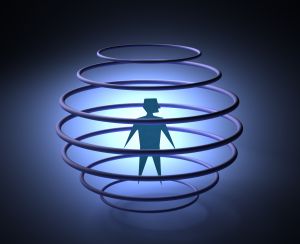Action Fork
If you have just completed the Trap Detector:
The trap with the highest score is most worthy of your attention at this moment. A recommended strategy is to focus on this trap with the goal of mastering it. [ If there is a tie score you will have to work on them both].
To master an addictive trap:
- Read the chapters related to the trap. Use your Cognitive Processing System to understand the cause-and-effect principles that make the trap work the way it does. This is an intellectual exercise. It may involve detective work or personal research.
- first task is to understand, at an intellectual level, how the trap works and what you must do to prevent being taken in by it.
Once your rational system has processed this abstract information you are ready for puppy training, which is the focus of the next section
Once you have mastered this trap, take the trap detector again. You are likely to find that a different trap comes out highest. Repeat the sequence of developing an abstract appreciation of the trap and how to cope with it, and then do the puppy training required to escape or avoid this kind of trap.
By now you have completed the trap detector. and hopefully beginning to understand how your particular trap works. This is a good opportunity to assess where you are now and decide how best to proceed from here.
Where to now?
- Studying what happens to people as they go through their version of the passage from dependence to self-determination offers a cheap education about the challenge facing you. The Stages of Change model will give you an overview of the stages of your journey, as well as tools to help you through each one. If you have the time, this is a good place to begin your journey.
- Once you appreciate your stage of readiness for change you can focus on the tools appropriate for that stage.
- Contemplation Stage - Decision Matrix
- Decision Stage - What it means to decide
- Action Stage - Training Tools
- Relapse Prevention Stage - Treatment Plan
- will you use TP or just reminder card
- Once you appreciate your stage of readiness for change you can focus on the tools appropriate for that stage.
- While each addictive trap is unique, there are some common entrapment mechanisms. To get a feel for how your trap works, complete the Trap Detector Self-Test. The trap with the highest score is likely to be most urgent. Strategies and tools to help you understand and solve the trap are provided. If it is urgent that you begin taking action now, the Trap Detector Self-Test is the place to start.
Emotion-Focused Coping
If you are in crisis now, you will have to manage your emotions well enough so you can solve the problems facing you. Depression and Anxiety are often implicated in Incentive Use Disorders. The self-tests below provides a rough gage of the severity of your symptoms, and hence the importance of Emotion-Focused Coping.
If you score in the moderate or severe range on either test, you probably meet the diagnostic criteria for a mood disorder that requires treatment in its own right. Failure to address the mood disorder will likely sabotage your efforts to prevent relapse. [If you are not currently working with a clinician, please feel free to contact our office to discuss how to manage a moderate or severe mood disorder.]
Below are some resources to develop your emotion-focused coping skills.
Navigational Options
Considering my current situation as well as what I know about myself, best path for me to take at this point is:
- Study the cause-and-effect principles that pertain to addiction and its resolution - Default Path
- Develop my emotion focused coping skills, which includes the ability to stay cool during crises
- The relationship between an individual an an addictive incentive tends to follow a predictable path. Identify my position on this path so I can choose the right tools.
- I want to focus on learning about and escaping my addictive trap.
Pathology: The Study of Paths > >
